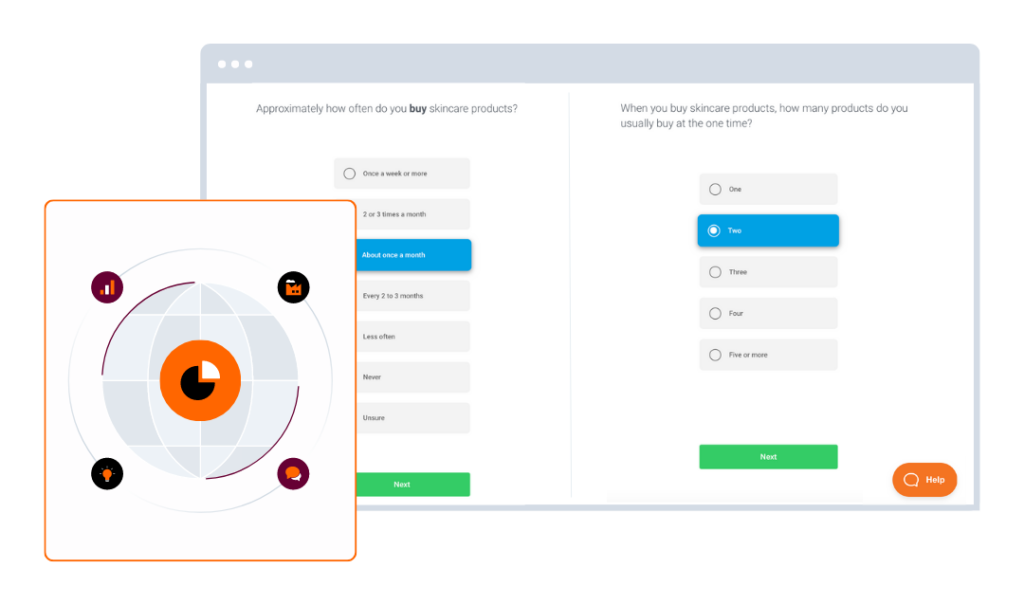Entering a new market might be the logical next step for your brand and its products, however, it’s a costly exercise that can be incredibly risky when not executed properly. To successfully break into a new market, first you need to have a clear understanding of:
- Your goals from the outset
- The new audience that you’ll be reaching
- Your established competitors in this new market
- How your brand’s presentation and visual identity will be perceived in this new market
So, how do you go about market expansion with confidence? By conducting thorough and targeted research that equips you with a sound knowledge of the new market you’re looking to break into. With the right information, businesses can drastically reduce the risks associated with entering new markets, and improve their chances of scaling up quickly.
This article covers what consumer insights to consider when evaluating your market entry and shaping your go-to-market expansion strategy.
Research considerations before expansion into a new market:
1. Assume nothing
The biggest mistake you can make is overestimating how easy it will be for your product to succeed in a new market. Even if your brand is a leader in your current market, cultural and societal differences are significant factors to consider. You should approach it as if you are introducing your product to the world for the first time. For example, consumer preferences and needs may be completely different in new markets.
Until you can answer the following questions, you are entering the market blind:
- What problems are you solving for your new audience?
- What’s the job that needs doing?
- Where is your target audience located?
- What are their interests?
- What are their ethnographic traits?
- How would you define them demographically?
2. Research informs strategy
There are four things that underpin the success of any new market entry (whether it’s a new region within the same country or an entirely new market altogether). You must understand your audience, their needs, your product fit and how to effectively position your offer to these new audiences.
Before implementing any strategy, start with the cold, hard figures. It usually makes sense to begin with some qualitative research to explore and capture the nuances between new and existing markets before conducting more robust quantitative research to validate your early findings.
3. Get to know your competition
The same as you would when introducing a new product to your local market; it’s imperative that you identify and understand the scale, positioning, strengths and weaknesses of your direct competitors in a new market.
For example, research platforms like Glow can enable you to quickly and effectively understand market dynamics and gather insight into competitors through surveying category users. That way, you can identify and monitor key competitors before you even enter the market, so you’re well prepared for the landscape to which you’re introducing your products.
4. Get to know your customers
Who is your ideal customer—what is their persona? What journey do you want to take them on, and what kind of experience do you want them to have with your brand? Once you’ve created a map of this target customer, it’s time to build your go-to-market approach and test this as part of your research.
Learn how the Wine & Spirit Education Trust (WSET) used research to help define its strategy for entering a new category.
What does the feedback and market research tell you? Is the potential of this new market worth entering with your product, or is it best to walk away (or at least make adjustments to your strategy)
5. Show the new market what you’re offering
This is where concept testing comes into play. Now that you have an idea of your target market, you can run your product by them and gauge its appeal. This will either validate your product-market fit or help pinpoint areas for improvement.

6. Make sure your marketing is working hard
Marketing and advertising always make up a large chunk of your expenses for entering a new market – so make sure it resonates with your audience. Communications testing is often the biggest hurdle, where the most attention to detail is required. Why? Different cultures have different senses of humour, different core values, and other factors that can drastically impair your current marketing strategy’s ability to hit home with this new audience.
Transcreation is the process of adapting a message from one language to another while maintaining its intent, style, tone, and context. Literally translating your brand messaging and marketing material into a new language is one thing, but what about nuances like sarcasm or irony? Will these nuances carry across, or do you need to completely adjust your advertising campaigns accordingly?
When testing comms across markets with different languages, translation is often a problem – adding considerable cost and time to the process. Glow’s platform instantly translates surveys, so that local language speakers can then easily tweak the content or questions in platform to reflect market nuances. This saves time and money.
Learn how multi-national consumer goods company Reckitt used multi-market research to optimise messaging for its
Enfa infant formula brand.
7. Monitor your progress
The research doesn’t stop when you finally enter the new market – if anything, it’s only just begun! Once you’ve launched, you need to keep a close eye on how your brand and its products are going. Have your audience heard of you? Are they acting as you expected? If not, what can be tweaked? What can be improved?
Brand health tracking is essential at this stage. By monitoring key metrics like brand awareness, consideration, and consumer sentiment, you can gain insight into your brand’s overall health.
If things aren’t going as planned, a deeper in-market test can provide the insights you need to course-correct. This type of testing helps you identify specific issues and refine your strategy to get your launch back on track.
Learn how Gatorade used research to uncover key insights into why a new product launch wasn’t going to plan.
If you don’t know it, Glow it
So where can you find all this essential information, assemble it in a way that makes sense, and then analyse it for the crucial consumer insights that your brand needs before entering a new market?
Who better to give you insights about your potential customers than the potential customers themselves? Market research platforms like Glow take the guesswork out of entering new markets.
Glow’s state-of-the-art platform gives you access to 110 million people in 60 countries who speak over 30 languages. Take advantage of instant language translation, real-time data visualisation, and one-click analytics to get the insights you need to reduce your risk.

Whether it’s market assessment, buyer profiling, concept or comms testing, or brand tracking, Glow can provide robust consumer insights quickly.
Glow helps reduce the risk of market expansion by making research more accessible, affordable, and reliable. You pay for what you use, with no need for long-term commitments — simply grow your business faster.
Want to learn more about using consumer insights to break into a new market safely, confidently, and successfully with Glow?
Learn how Market Analysis on Glow can help you de-risk your new market launch with real opinions from real humans 3x faster than traditional market research.
